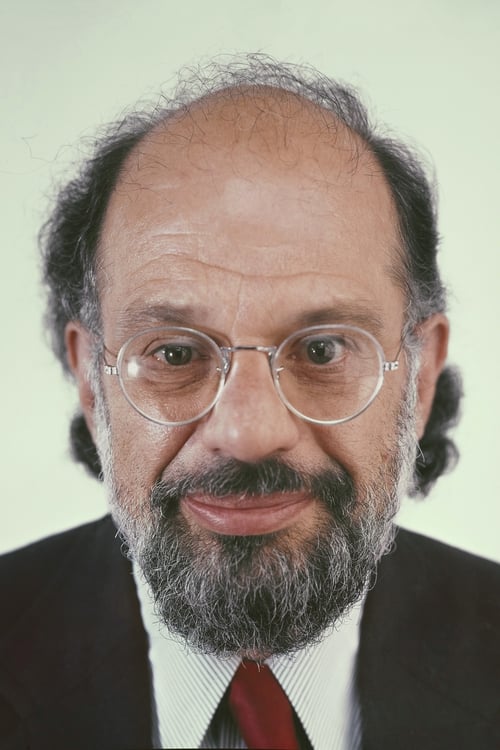
Self (archive footage)
История основоположника видеоарта, который скрестил дзен с новыми технологиями и предвосхитил современную цифровую культуру.

Self
The story focuses on Newark's Baraka family and its involvement in social activism, poetry, music, art and politics.

Self (archive footage)
Документальный фильм Тодда Хейнса с эксклюзивными интервью и архивными кадрами предлагает авангардный взгляд на историю легендарной американской рок-группы.

Himself (voice)
"Symphony of the Invisible" is a reflection on creation and how through art, poetry and images you can break the limits that have been imposed on language and life itself.
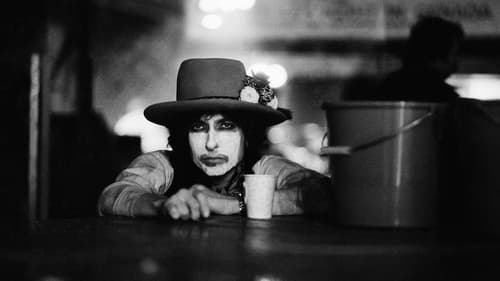
The Oracle of Delphi
Part documentary, part concert film, part fever dream, this film captures the troubled spirit of America in 1975 and the joyous music that Dylan performed during the fall of that year.

Self (archive footage)
Каждое поколение изобретает лекарство, которого заслуживает. В современной Америке, где люди конкурируют друг с другом всю жизнь и каждый хочет быть первым, стало невозможно существовать без приёма Аддералла и других опасных стимуляторов, которые влияют на жизнь и образ мышления целого поколения.

The 94-year-old Robert Frank’s unique recordings of his fellow artists Harry Smith and Allen Ginsberg, which he had salvaged from his own archive for Harry Smith at the Breslin Hotel.
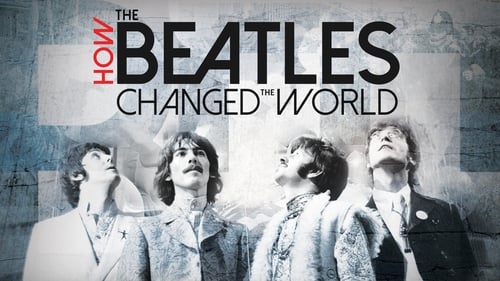
Self (archive footage)
The fascinating story of the cultural, social, spiritual, and musical revolution ignited by the coming of the Beatles. Tracing the impact that these four band members had, first in their native Britain and soon after worldwide, it reappraises the band and follows their path from young subversives to countercultural heroes. Featuring fresh, revealing interviews with key collaborators as well as a wealth of rarely-seen archival footage, this is a bold new take on the most significant band in the history of music and their enduring impact on popular culture.

Self (archive footage)
Portrait photographer Elsa Dorfman found her medium in 1980: the larger-than-life Polaroid Land 20x24 camera. For the next thirty-five years, she captured the “surfaces” of those who visited her studio: families, Beat poets, rock stars, and Harvard notables. As pictures begin to fade and her retirement looms, Dorfman gives Errol Morris an inside tour of her backyard archive.
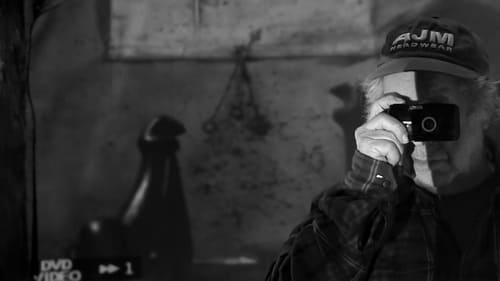
Self (archive footage)
The life and work of Robert Frank—as a photographer and a filmmaker—are so intertwined that they're one in the same, and the vast amount of territory he's covered, from The Americans in 1958 up to the present, is intimately registered in his now-formidable body of artistic gestures. From the early '90s on, Frank has been making his films and videos with the brilliant editor Laura Israel, who has helped him to keep things homemade and preserve the illuminating spark of first contact between camera and people/places. Don't Blink is Israel's like-minded portrait of her friend and collaborator, a lively rummage sale of images and sounds and recollected passages and unfathomable losses and friendships that leaves us a fast and fleeting imprint of the life of the Swiss-born man who reinvented himself the American way, and is still standing on ground of his own making at the age of 90.

Self (archive footage)
When Howard Brookner lost his life to AIDS in 1989, the 35-year-old director had completed two feature documentaries and was in post-production on his narrative debut, Bloodhounds of Broadway. Twenty-five years later, his nephew, Aaron, sets out on a quest to find the lost negative of Burroughs: The Movie, his uncle's critically-acclaimed portrait of legendary author William S. Burroughs. When Aaron uncovers Howard's extensive archive in Burroughs’ bunker, it not only revives the film for a new generation, but also opens a vibrant window on New York City’s creative culture from the 1970s and ‘80s, and inspires a wide-ranging exploration of his beloved uncle's legacy.

Self (archive footage)
Documentary about western popular music concerts as bearer tendencies of democracy and freedom in the Czechoslovak area in period 1965 - 1990. Unique and comprehensive view of the cultural and political significance visits of western popular and alternative culture personalities who were brought democratic idea to the former socialist Czechoslovakia.

A journey into the BBC archives unearthing glorious performances and candid interviews from some of Britain's greatest poets.

Tells the story of the wonderful and long-lasting friendship between Jack Kerouac, Allen Ginsberg and William Burroughs that gave birth to the Beat Generation movement.
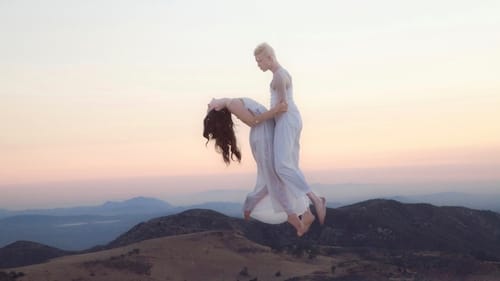
Poem
Based on the Biblical story of sin and redemption, Adam and Eve explore modern LA; the land of gods and monsters.

Self
A provocateur, a rebel, a performer, and a true American, Norman Mailer never stopped giving people something to talk about. This documentary goes beyond the Mailer of the bookshelves and NY Times best seller list to Mailer the social critic, family man, filmmaker, and lover. Here's a look into the life of a complex, intellectual, working class hero. With never before seen footage of Adele Morales Mailer's startling revelations after being stabbed by her husband. Featuring unseen footage and interviews from wives and lovers, enemies and admirers, his children and the man himself.

CRAZY WISDOM explores the arrival of Tibetan Buddhism in America through the story of Chögyam Trungpa, who landed in the U.S. in 1970. Trungpa became renowned for translating ancient Buddhist concepts into language and ideas that Westerners could understand and shattered preconceived notions about how an enlightened teacher should behave. Initially rejected, his teachings are now recognized by western philosophers and spiritual leaders as authentic and profound.

Self (archive footage)
Фильм рассказывает о жизни Уильяма Берроуза, легендарного писателя и американской иконы поколения битников. Он был одним из первых, кто в 1950-е годы поднял вопрос о гомосексуализме и наркомании в литературе. В дальнейшем Берроуз был провозглашен крестным отцом Разбитого поколения, и его личность повлияла на последующие поколения художников.

Himself
Жизнь и творчество легендарного битника Аллена Гинзберга. В центре сюжета — судебное преследование Гинзберга, вызванное публикацией в 1956 году его скандальной поэмы «Вопль».

Himself
The poet and painter, Lawrence Ferlinghetti, is among the world's living monuments to arts and letters. For well over a half century, Ferlinghetti helped shape the currents of poetry and literature with his forceful engagement with society and an ideological position that often found him at odds with the political currents of his day. Ferlinghetti's quiet, behind the scenes demeanor and disarming mien may have assuaged, or even fooled, certain opponents, while in reality he was a literary mercenary, a rebel at the forefront of our own cultural revolution.

Self (archive footage)
Wild Combination is a visually absorbing portrait of the seminal avant-garde composer, singer-songwriter, cellist, and disco producer Arthur Russell. Before his death in 1992, Arthur prolifically created music that spanned both pop and the transcendent possibilities of abstract art. Now, over fifteen years since his passing, Arthur's work is finally finding its audience. Wolf incorporates rare archival footage and commentary from Arthur's family, friends, and closest collaborators to tell this poignant and important story.

Himself (archive footage)
Visionary, radical, spiritual seeker, renowned poet, founding member of a major literary movement, champion of human rights, Buddhist, political activist and teacher. Allen Ginsberg's remarkable life challenged the very soul of the United States.

Self (archive footage)
A collection of rare outtakes and performances from Pennebaker's 1965 documentary Don't Look Back.

Himself (Archive Footage)
5 psychedelic short films, broadcast on the French/German tv channel "arte" on 2007-07-16 "Be-In" USA 1967, 7 min "Beatles Electronique" USA 1966-69, 3 min "San Francisco" Great Britain 1967/68, 15 min. "Andy Warhol's Exploding Plastic Inevitable" USA/Great Britain 1967, 12 min. "Eyetoon" USA 1967/68, 8 min.

The Old, Weird America tracks the history of the Anthology of American Folk Music from its initial compilation of 78 records from rural Americana to its 1952 release on Folkways Records, the urban folk revival of the 1960s, and its continuing influence on contemporary music.

Self
The legendary press conference in San Fransisco at KQED studios on Dec. 3rd 1965. This was a pivotal year in Bob Dylan's career. In the early part of the year he released "Bringing It All Back Home", the first album that saw him move distinctly away from his folk music origins. In the summer he followed it with "Highway 61 Revisited", an out and out rock 'n' roll album, and the single "Like A Rolling Stone" hit No.2 on the US charts. His appearance at that year's Newport Folk Festival saw him use an electric guitar on stage, a hugely controversial move at the time that saw him booed by much of the audience. Against this background, Dylan went into the studios of TV station KQED in San Francisco for a broadcast press conference hosted by Ralph J. Gleason, his only one from this era ever to be filmed.
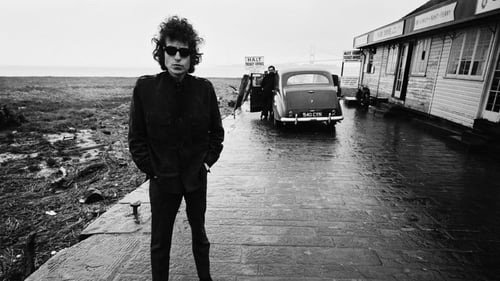
Self
Документальный фильм о нескольких годах из жизни легендарного Боба Дилана.

Himself (archive footage)
John Sinclair first emerged out of his small-town Michigan background to forge a legendary course through the 1960s as a cultural activist, manager of the MC5, and Chairman of the White Panther Party. An early victim of the War on Drugs who faced 20 years to life in prison for giving two joints to an undercover policewoman, Sinclair served 29 months of a 9-1/2-to-10-year sentence before his legal victory on appeal changed the law for good. The long campaign waged by Sinclair culminated in a massive John Sinclair Freedom Rally headlined by John Lennon & Yoko Ono, Stevie Wonder, Bob Seger, Phil Ochs, Allen Ginsberg and Bobby Seale that resulted in Sinclair's release from prison on December 13, 1971-just three days after the event (Clint Weiler)

Self (archive footage)
A documentary about the film, I am Curious-Yellow (1967), and how it made it into the USA and changed film in USA forever by breaking the USA Obscenity Codes.
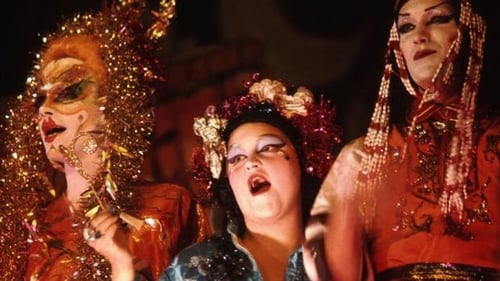
Self (archive footage)
Documentary about the gender-bending San Francisco performance group who became a pop culture phenomenon in the early 1970s.

Himself
Harry Smith was neglected during his life but, as more details about his work emerged since his death in 1991, he is now recognized as one of the great visionary outsiders of American art. A painter, experimental film-maker, occultist, musicologist and self-proclaimed urban anthropologist, Smith has been championed by everyone from Bob Dylan ('without Harry Smith I wouldn't have existed') to Beck and the Grateful Dead. With its stumbling narration (from Igliori herself) and crude mix of film footage, interviews and music, this is not a polished documentary, but Smith is such a wondrously exotic subject it's easy to overlook the formal inadequacies.

Himself
New York in the Fifties is the story of a unique time and place, when New York was the hotbed of new artistic expressions, free love, drinking, hot jazz, and radical politics.
The film combines stunning archival footage of New York with interviews and footage of icons of the day-Kerouac, Ginsberg, Baldwin, Mailer, Basie, etc. Offering modern day perspective and reminiscences are writers, actors, and artists such as Joan Didion, Robert Redford, Nat Hentoff, Gay and Nan Talese, John Gregory Dunne, William F. Buckley, and Calvin Trillin-all part of the rich cultural and artistic scene of the time. Based on the best-selling book by Dan Wakefield, the film also traces Wakefield's restless rebellion in conformist Indianapolis, and his escape to New York with dreams of writin ga novel, falling in love, meeting like-minded souls and questioning the meaning of life.

Self
A compilation of over 30 years of private home movie footage shot by Lithuanian-American avant-garde director Jonas Mekas, assembled by Mekas "purely by chance", without concern for chronological order.

John McNaughton's spotlight on George Condo and his art. The film, which follows the progress of Condo's large-scale oil painting Big Red over the course of one year, features an appearance by Allen Ginsberg, as well as footage of Condo collaborating with William S. Burroughs on paintings the two made together at Burroughs' Kansas home in the mid-1990s.

Himself
One of the most enigmatic artists of the 20th century, writer, composer and wanderer Paul Bowles (1910-1999) is profiled by a filmmaker who has been obsessed with his genius since age nineteen. Set against the dramatic landscape of North Africa, the mystery of Bowles (famed author of The Sheltering Sky) begins to unravel in Jennifer Baichwal's poetic and moving Let It Come Down: The Life of Paul Bowles. Rare, candid interviews with the reclusive Bowles--at home in Tangier, as well as in New York during an extraordinary final reunion with Allen Ginsberg and William Burroughs--are intercut with conflicting views of his supporters and detractors. At the time in his mid-eighties, Bowles speaks with unprecedented candor about his work, his controversial private life and his relationships with Gertrude Stein, Tennessee Williams, Truman Capote, the Beats, and his wife and fellow author Jane Bowles.
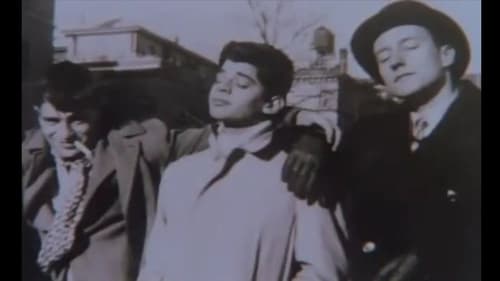
Self
Фильм представляет историю рождения и развития бит-культуры Соединенных Штатов, одним из девизов которой стало изречение героя произведения Дж. Керуака: «Я люблю сумасшедших, таких, которые бешено хотят жить, бешено хотят говорить, бешено хотят спастись, которые хотят иметь все сразу, которые никогда не зевают и никогда не говорят пошлостей, а всегда горят, горят, горят».

Himself (archive footage)
Witness the last days of the Beat poet whose works would capture the very essence of the 1960 counter-cultural movement in an informative documentary featuring Allan Ginsburg's final television interview as well as remarkable deathbed footage shot by underground cinema icon Jonas Mekas.

Music
A close-up of Allen Ginsberg reciting his “skeletons” poem is bluescreened and dissolved against archival film and video clips, and backed by musicians to create a sort of song that becomes an American anthem.

Writer
A close-up of Allen Ginsberg reciting his “skeletons” poem is bluescreened and dissolved against archival film and video clips, and backed by musicians to create a sort of song that becomes an American anthem.

A close-up of Allen Ginsberg reciting his “skeletons” poem is bluescreened and dissolved against archival film and video clips, and backed by musicians to create a sort of song that becomes an American anthem.

Himself
On October 9th, 1972 an exhibition of John Lennon/Yoko Ono's art, designed by the Master of the Fluxus movement, George Maciunas, opened at the Syracuse Museum of Art, in New York. On the same day an unusual group of John's and Yoko's friends, including Ringo, Allen Ginsberg, Paul Krasner, and many others, gathered to celebrate John's birthday. This film is a visual and audio record of that event.
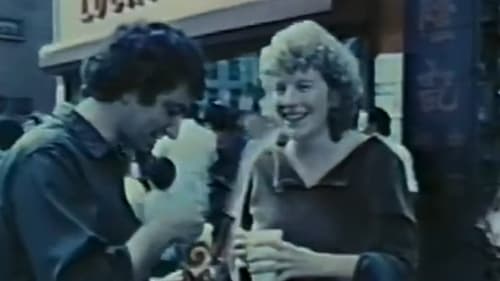
Self
Filmmaker Jonas Mekas films 160 underground film people over four decades.

Himself
This is a video record of the Buddhist Wake ceremony at Allen Ginsberg's apartment. You see Allen, now asleep forever, in his bed; some of his close friends; and the wrapping up and removal of Allen's body from the apartment. You hear Jonas' description of his last conversation with Allen, three days earlier. You see the final farewell at the Buddhist temple, 118 West 22nd Street, New York City, and some of his close friends: Patti Smith, Gregory Corso, LeRoy Jones-Baraka, Hiro Yamagata, Anne Waldman, and many others.

Himself
Documentary about U2's album Pop and following tour.

Himself
Filmmaker Gyula Gazdag's fascinating documentary follows Hungarian poet, playwright and activist István Eörsi on a trip to the streets of New York to visit his friend and contemporary, the iconic beat poet Allen Ginsberg. Shot just two years before Ginsberg's death, the film follows the two friends as they share poetry and laughs, wandering the streets of the Lower East Manhattan, musing about the past and contemplating the future.

Himself
A party hosted by Beat poet Allen Ginsberg inspired the director's award-winning graduation film Van Gogh's Ear, an experimental short featuring the maestro talking about his creations, death and immortality.

Himself
Not a documentary in the strictest sense of the word. Rather, it is a journey through the world of the artist Jonas Mekas - one of the exponents of independent U.S. movies; founder and director of the New York Anthology Film Archive.

Himself
Members of the controversial group NAMBLA (North American Man/Boy Love Association) discuss why their organization supports "boys and men who have or desire engagements in sexual or emotional relationships."

Self
Andrei Cordescu, NPR journalist, Romanian immigrant, naturalized American citizen, and newly-licensed driver, sets out on a cross- country road trip. He travels from-sea-to-shining-sea in a red 1968 Cadillac ragtop, exploring the meaning of freedom to a variety of Americans in this gently comic, yet poignant, documentary. Highlights include stops in New York, Camden, Detroit, Chicago, Taos, Arizona, Las Vegas, and San Francisco.
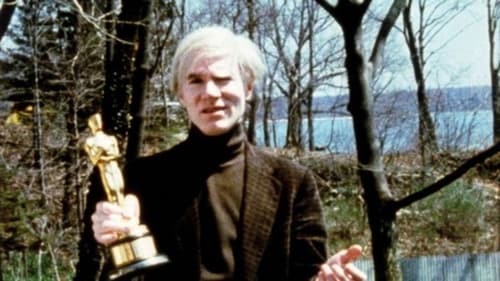
Self
This intimate portrait of Andy Warhol pulls together a unique library of material shot by New York film legend Jonas Mekas. Spanning from 1963 to 1990, the film features a cast of counterculture icons including Allen Ginsberg, George Maciunas, John Lennon, and Yoko Ono, as well as John and Caroline Kennedy, and Lee Radziwill (Jackie Kennedy Onassis's sister and Warhol muse)—to whom Mekas dedicates the film. The film features footage from the Velvet Underground's first public performance. A portrait of the remarkable life of arguable the twentieth century's most famous artist and leading iconographer.

Himself
AIDS victims and activists cope with hardship and society’s ignorance.
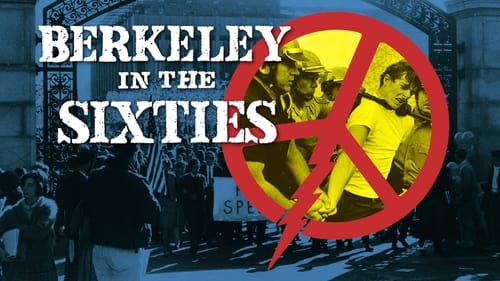
Self
A documentary about militant student political activity at the University of California, Berkeley in the 1960s.

Produced in collaboration with MICA-TV, Summer of Love is a public service announcement produced for the American Foundation for AIDS Research. Featuring The B-52’s, David Byrne, Allen Ginsburg, Quentin Crisp, John Kelly, and others.

Self
Celebrities and creatives -- including musician David Byrne, performance artist Spalding Gray, comedian Sandra Bernhard, radical activist Abbie Hoffman, and poet Allen Ginsberg-- recall their earliest sexual experiences.

Self
Filmmaker Morley Markson shows Abbie Hoffman, Jerry Rubin, Allen Ginsberg, Timothy Leary, and other '60s rebels, then and now in a follow up to his 1971 film "Breathing Together: Revolution of the Electric Family."

Himself
Maria Beatty's documentary exploring the insights and influences of the American Beat Poets. The film conveys their consciousness and sensibility through interviews with William Burroughs, Allen Ginsberg, Diane Di Prima, among others. Also weaves in additional commentary from contemporary musicians, poets and writers such as Marianne Faithfull, Richard Hell, Lydia Lunch and Henry Rollins. Also expands upon how the poets reached new levels of creativity and inspired social change.

Himself
Artists, Philosophers, Musicians, Politicians and more offer their thoughts on Pro Football, in this 1986 film produced by NFL Films.
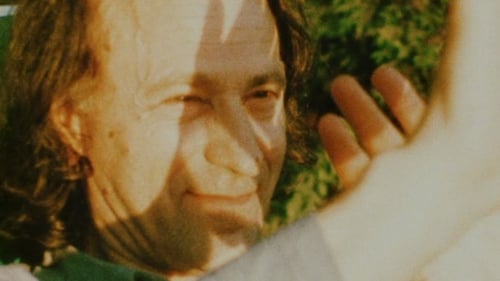
Self
«Фильм состоит из 124 коротких скетчей, каждый продолжительностью от полминуты до примерно двух минут. Портреты людей, с которыми я провел время, мест, времен года, погоды (штормы, снегопады, метели и так далее). Многое о моих друзьях кинематографистах - улицы и парки Нью-Йорка - короткий побег на природе, за город - ничего зрелищного, неважного праздника жизни, который к настоящему времени прошел, и остается только в качестве записи в этих личных кратких набросках...» Йонас Мекас.

Self (archive footage)
A compilation of avant-garde artwork and talent of the mid to late 20th century hosted by Ryuichi Sakamoto.
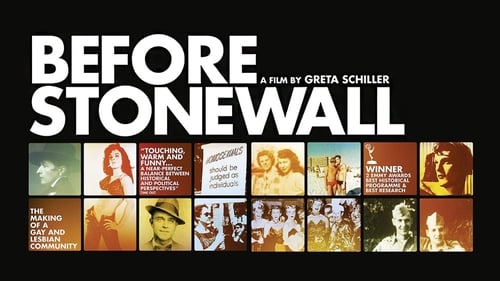
Himself
New York City's Stonewall Inn is regarded by many as the site of gay and lesbian liberation since it was at this bar that drag queens fought back against police June 27-28, 1969. This documentary uses extensive archival film, movie clips and personal recollections to construct an audiovisual history of the gay community before the Stonewall riots.

Self
An exploration of Burroughs’ life story, as told by Burroughs himself along with many of his contemporaries, including Allen Ginsberg, Brion Gysin, Francis Bacon, Herbert Huncke, Patti Smith, Terry Southern, and William Burroughs Jr.

Self
In his book "1984", George Orwell saw the television of the future as a control instrument in the hands of Big Brother. Right at the start of the much-anticipated Orwellian year, Paik and Co. were keen to demonstrate satellite TV's ability to serve positive ends-- Namely, the intercontinental exchange of culture, combining both highbrow and entertainment elements. A live broadcast shared between WNET TV in New York and the Centre Pompidou in Paris, linked up with broadcasters in Germany and South Korea, reached a worldwide audience of over 10 or even 25 million (including the later repeat transmissions).


The influence of Jewish fathers on their sons and the complexity of familial relationships are explored in a witty, poignant portrait of two artists. Beat poet Allen Ginsberg (whose father Louis was a poet in his own right) and performance artist/sculptor Allan Kaprow (whose father is a high-powered lawyer) are the sons who struggle with and against the influences of these patriarchal figures.

More than 20 contemporary North American poets recite, sing, and perform their work. Early in the film, Charles Bukowski talks about the energy of poets and of a poem. These poets are the children of Walt Whitman and of Charles Olson, incantatory and oratorical, radical, sometimes incorporating contemporary political imagery. Black Mountain poets, the Beats, minimalists like John Cage, the wordless Four Horsemen, Tom Waits, and others capture aspects of poets as troubadours.

Harry Smith’s final film; an epic four-screen projection. Smith worked on this cinematic transformation of Kurt Weill and Bertolt Brecht’s opera Rise and Fall of the City of Mahagonny (1929) for over ten years and considered it his magnum opus. The film was shot from 1970 to 1972 and edited for the next eight years. The “program” of the film is meticulous, with a complex structure and order. The Weill opera is transformed into a numerological and symbolic system. Images in the film are divided into categories— portraits, animation, symbols and nature— to form the palindrome P.A.S.A.N.A.S.A.P. The film contains invaluable cameos of important avant-garde figures such as Allen Ginsberg, Patti Smith, and Jonas Mekas, intercut with installation pieces from Robert Mapplethorpe’s studio, New York City landmarks of the era, and Smith’s visionary animation.

Paik produced this exuberant, high-speed collage as a commission for the National Fine Arts Committee of the 1980 Olympic Winter Games. In a fractured explosion of densely layered movement and action, images of Olympic sports events are mixed with Paik’s recurring visual and audio motifs.

Himself
A short documentary about the October 14 1979 March For Lesbian And Gay Rights in Washington D.C.

Other
After World War II a group of young writers, outsiders and friends who were disillusioned by the pursuit of the American dream met in New York City. Associated through mutual friendships, these cultural dissidents looked for new ways and means to express themselves. Soon their writings found an audience and the American media took notice, dubbing them the Beat Generation. Members of this group included writers Jack Kerouac, William Burroughs, Allen Ginsberg. a trinity that would ultimately influence the works of others during that era, including the "hippie" movement of the '60s. In this 55-minute video narrated by Allen Ginsberg, members of the Beat Generation (including the aforementioned Burroughs, Anne Waldman, Peter Orlovsky, Amiri Baraka, Diane Di Prima, and Timothy Leary) are reunited at Naropa University in Boulder, CO during the late 1970's to share their works and influence a new generation of young American bohemians.

Himself
After World War II a group of young writers, outsiders and friends who were disillusioned by the pursuit of the American dream met in New York City. Associated through mutual friendships, these cultural dissidents looked for new ways and means to express themselves. Soon their writings found an audience and the American media took notice, dubbing them the Beat Generation. Members of this group included writers Jack Kerouac, William Burroughs, Allen Ginsberg. a trinity that would ultimately influence the works of others during that era, including the "hippie" movement of the '60s. In this 55-minute video narrated by Allen Ginsberg, members of the Beat Generation (including the aforementioned Burroughs, Anne Waldman, Peter Orlovsky, Amiri Baraka, Diane Di Prima, and Timothy Leary) are reunited at Naropa University in Boulder, CO during the late 1970's to share their works and influence a new generation of young American bohemians.

Himself
Thot-Fal’N is a typical piece of Stan Brakhage montage: 9 minutes of completely silent close-ups, shots blurred to incoherence, and occasional clips of American streets or people. Among the identifiable humans there’s a brief sequence with William Burroughs and a balloon, and also shots of Allen Ginsberg and Peter Orlovsky.
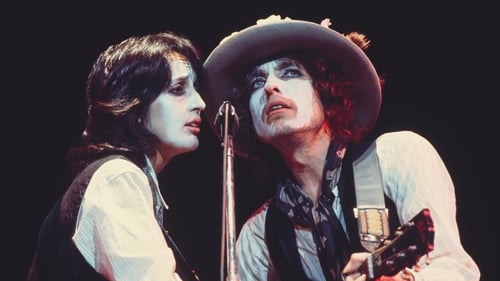
The Father
Filmed in the autumn of 1975 prior to and during Bob Dylan's Rolling Thunder Revue tour – featuring appearances and performances by Ronee Blakley, T-Bone Burnett, Jack Elliott, Allen Ginsberg, Arlo Guthrie, Ronnie Hawkins, Roger McGuinn, Joni Mitchell, Mick Ronson, Arlen Roth, Sam Shepard, and Harry Dean Stanton – the film incorporates three distinct film genres: concert footage, documentary interviews, and dramatic fictional vignettes reflective of Dylan's song lyrics and life.

Self
A tribute concert honoring the life of legendary folksinger Phil Ochs recorded at the Madison Square Garden's Felt Forum in 1976.

Self
Jonas Mekas adjusts to a life in exile in New York in his autobiographical film, shot between 1949 and 1963.

Self
Suite 212 is Paik's "personal New York sketchbook," an electronic collage that presents multiple perspectives of New York's media landscape as a fragmented tour of the city. Paik critiques the selling of New York by multinational corporations and the city's role as the master of the media and information industries; Collaborators Yalkut, Davis and Kubota contribute their own vibrant and punchy segments.

Himself
Warhol superstar and icon of sixties bohemia Edie Sedgwick delivers her final performance in this semiautobiographical look at the price of fame. Fiction and documentary—including snippets from Sedgwick’s own audio dairies—mingle in a freewheeling portrait of Susan Superstar (Sedgwick), a New York celebrity on a drug-fueled downward slide that mirrors Sedgwick’s own self-destructive spiral. Released after her death from an overdose of barbiturates, CIAO! MANHATTAN endures as a testament to Sedgwick’s unique magnetism and as a haunting elegy for the counterculture she embodied.

Pickup's Tricks is a beat documentary of Hibiscus and the Cockettes, who were pioneers of San Francisco’s underground queer theater in the early '70s. It is a multifarious blend of sexual anarchy; a raucous and unscripted mix of liberation and elation as rough and spirited as the lifestyle that created it. The film profiles Hibiscus, founding member of the Cockettes, the psychedelic drag queens that performed midnight musicals at the Palace Theater in San Francisco. The film includes a rare screen appearance of Allen Ginsberg, clean-shaven and costumed in "acute drag" as a Yiddishe Mama with a painted-on third eye. (pickupstricks.com)

Global Groove was a collaborative piece by Nam June Paik and John Godfrey. Paik, amongst other artists who shared the same vision in the 1960s, saw the potential in the television beyond it being a one-sided medium to present programs and commercials. Instead, he saw it more as a place to facilitate a free flow of information exchange. He wanted to strip away the limitations from copyright system and network restrictions and bring in a new TV culture where information could be accessed inexpensively and conveniently. The full length of the piece ran 28 minutes and was first broadcasted in January 30, 1974 on WNET.

Self
The title of this Canadian documentary may have some relation to Canadian Marshall McLuhan's theories. It combines interview with famous U.S. militants of the '60s, such as Jerry Rubin and Abbie Hoffman, with reenactments of their Chicago trials (i.e., the "Chicago Eight," etc.). Other figures of cultural interest from the time, including Alan Ginsberg and Buckminster Fuller, are interviewed or featured. The filmmaker indicates his belief that powerful forces in the U.S. government worked together to suppress American radicals. This view, widely disbelieved at the time, has since been confirmed.

Johnny Minotaur is a lyrical explosion of taboos: incest, intergenerational desire, pansexuality and autoeroticism are a few of the issues Charles Henri Ford grapples with through mythopoeic, sensual imagery, recitations of his diaries and a philosophical debate featuring an impressive narration by such artists as Salvador Dali, Allen Ginsberg, Warren Sonbert and Lynne Tillman.
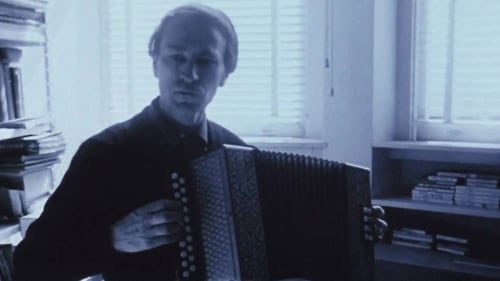
Self
An epic portrait of the New York avant-garde art scene of the 60s.

Poem
Julius Orlovsky, after spending years in a New York mental hospital, emerges catatonic and must rely on his brother Peter, who lives with poet Allen Ginsberg. When Julius wanders off in the middle of filming, Frank hires and actor (Joseph Chaikin) to play the character and begins a fictional version of his psychological portrait. Then, as suddenly as he vanished, Julius turns up in an institution where he and Peter must face their relationship.

Himself
Julius Orlovsky, after spending years in a New York mental hospital, emerges catatonic and must rely on his brother Peter, who lives with poet Allen Ginsberg. When Julius wanders off in the middle of filming, Frank hires and actor (Joseph Chaikin) to play the character and begins a fictional version of his psychological portrait. Then, as suddenly as he vanished, Julius turns up in an institution where he and Peter must face their relationship.
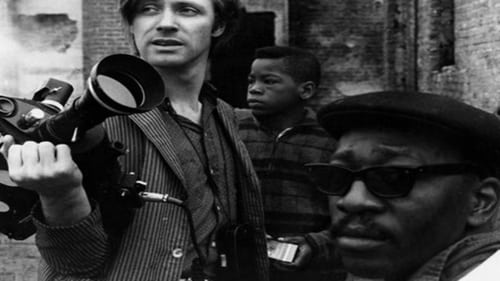
"The Fall" depicts certain scenes in New York City between October 1967 and March 1968, shot by the independent filmmaker, Peter Whitehead. It is a very personal documentary, and Whitehead appears in a large number of scenes, and we hear his lengthy ruminations on the state of the United States and the war in Vietnam.

Director
The Youth International Party, whose members were commonly called Yippies, was a radically youth-oriented and countercultural revolutionary group opposed to war and the status quo of American culture. Known for using theatrics and humor to advocate social change, several Yippies were notably on trial as the Chicago 7. Primarily consisting of footage from the 1968 Democratic National Convention in Chicago which sparked massive demonstrations that were met by violence and hysteria caused by the police. This film also includes found newsreel footage as well as Pigasus - the pig the Yippies advanced as a candidate for President of the United States.

Himself
The Youth International Party, whose members were commonly called Yippies, was a radically youth-oriented and countercultural revolutionary group opposed to war and the status quo of American culture. Known for using theatrics and humor to advocate social change, several Yippies were notably on trial as the Chicago 7. Primarily consisting of footage from the 1968 Democratic National Convention in Chicago which sparked massive demonstrations that were met by violence and hysteria caused by the police. This film also includes found newsreel footage as well as Pigasus - the pig the Yippies advanced as a candidate for President of the United States.

Himself
A rare behind-the-scenes view of the exploding New York “underground” in the late sixities, a turbulent time and place that was to change American culture forever. A German TV crew, led by journalist Gideon Bachmann, explores the epicenter of the sixties revolution in art, music, poetry and film and interviews the main players in the “New American Cinema,” that was born on the streets of New York. Against a backdrop of cultural upheaval in all of the arts and growing political agitation against the Vietnam War, Bachman interviews the most prominent figures in “underground film,” including Jonas Mekas, Shirley Clarke, the Kuchar Brothers and Bruce Connor, and visits the most notorious location in the New York art world of the era - Andy Warhol’s Factory - to conduct an interview with the genius of Pop Art himself.

The story of Joan of Arc as applied to the present revolution in arts and more. The Gothic is applied to the War in Vietnam. The film is experimental in the sense that in it the visual becomes tactile.
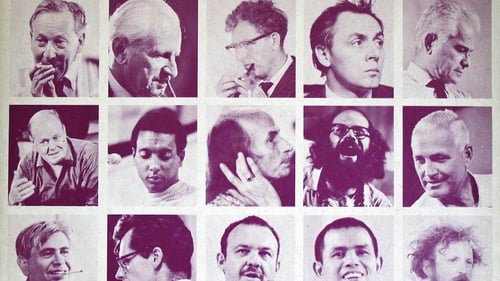
Self
Documentary of the Symposium on the Dialectics of Liberation and the Demystification of Violence, held in London, July 1967, organized by R.D.Laing, with Stokely Carmichael, Allen Ginsberg, Paul Goodman, Herbert Marcuse, John Gerassi, and many others. An important record of the spectrum of left-wing politics and personalities during the turbulent Sixties.

Himself
Peter Whitehead’s disjointed Swinging London documentary, subtitled “A Pop Concerto,” comprises a number of different “movements,” each depicting a different theme underscored by music: A early version of Pink Floyd’s “Interstellar Overdrive” plays behind some arty nightclub scenes, while Chris Farlowe’s rendition of the Rolling Stones’ “Out of Time” accompanies a young woman’s description of London nightlife and the vacuousness of her own existence. In another segment, the Marquess of Kensington (Robert Wace) croons the nostalgic “Changing of the Guard” to shots of Buckingham Palace’s changing of the guard, and recording act Vashti are seen at work in the studio. Sandwiched between are clips of Mick Jagger (discussing revolution), Andrew Loog Oldham (discussing his future) – and Julie Christie, Michael Caine, Lee Marvin, and novelist Edna O’Brien (each discussing sex). The best part is footage of the riot that interrupted the Stones’ 1966 Royal Albert Hall concert.

Allen Ginsberg in Britain.

Poet (voice)
When Max, a young poet hires a marketing company to turn his suicide-by-jumping into a mass-media spectacle, he finds that his subversive intentions are quickly diluted into a reactionary gesture, and his motivations are revealed as a desperate attempt to seek attention through celebrity.

Himself
A short film from Jonas Mekas depicting an afternoon in New York of people joining in singing "Hare Hare"

Captures the spirit and essence of the great San Francisco Human Be-In of January 14, 1967. Ten thousand people imbued with peace, love and euphoria. Set to hard rock such as only San Francisco blues can produce. BE-IN contains Allen Ginsberg, Lawrence Ferlinghetti, Timothy Leary, Michael McClure, Lenore Kandel and Buddha. Music by Blue Cheer.
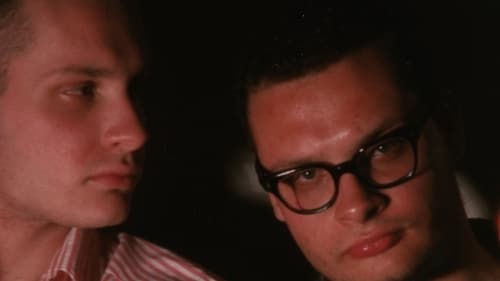
Himself
In March and April of 1966, Markopoulos created this filmic portrait of writers and artists from his New York circle, including Parker Tyler, W. H. Auden, Jasper Johns, Susan Sontag, Storm De Hirsch, Jonas Mekas, Allen Ginsberg, and George and Mike Kuchar, most observed in their homes or studios. Filmed in vibrant color, Galaxie pulses with life. It is a masterpiece of in-camera composition and editing, and stands as a vibrant response to Andy Warhol's contemporary Screen Tests.

Messiah
Рассел Харвик алкоголик и героинщик едет в Париж, чтобы пройти лечение сном. При этом на отходняке у него идут жуткие глюки.

Himself
A short film documenting what was referred to as "The International Poetry Incarnation". It was billed as Great Britain's first full-scale "happening", with the world's leading Beat poets together under one roof at the Royal Albert Hall on June 11, 1965, for an evening of near-hallucinatory revelry. It came to be seen as one of the cultural high points of the Swinging Sixties.

Self
The films were made between 1964 and 1966 at Warhol's Factory studio in New York City. Subjects were captured in stark relief by a strong key light, and filmed by Warhol with his stationary 16mm Bolex camera on silent, black and white, 100-foot rolls of film at 24 frames per second. The resulting two-and-a-half-minute film reels were then screened in 'slow motion' at 16 frames per second.

A short film by underground filmmaker Barbara Rubin.

Self
Report from the second free expression festival organized at the American Cultural Center, Boulevard Raspail, in May 1965. The shows, all happenings inspired by ""théâtre panique/ the panic theater", includes Fernando Arrabal, Roland Topor and Alejandro Jodorowsky.

Himself
The couch at Andy Warhol's Factory was as famous in its own right as any of his Superstars. In Couch, visitors to the Factory were invited to "perform" on camera, seated on the old couch. Their many acts-both lascivious and mundane-are documented in a film that has come to be regarded as one of the most notorious of Warhol's early works. Across the course of the film we encounter such figures as poets Allen Ginsberg and Gregory Corso, the writer Jack Kerouac, and perennial New York figure Taylor Mead.

This fascinating film documents the U.S. premiere production of Originale, a Happening by German composer Karlheinz Stockhausen. Filmed at the "2nd Annual Avant Garde Festival of New York," which was produced by Norman Seaman and Charlotte Moorman, the stage production was directed by Allan Kaprow. Performers include Nam June Paik, Moorman, Jackson Mac Low and Allen Ginsberg, among many others.

Self (voice)
A depressed woman, Barbara, is on the verge of suicide while a man she meets in a church and a married couple try to convince her that life is worth living.

Allen
Pull My Daisy is a film that typifies the Beat Generation. Directed by Robert Frank and Alfred Leslie, Daisy was adapted by Jack Kerouac from the third act of his play, Beat Generation; Kerouac also provided improvised narration.

Himself
Presents an intimate view of four decades of the Swiss-born artist Robert Frank who has had an extraordinary influence on contemporary photography and filmmaking. This documentary which examines his life through his films and photographs, includes interviews with many of his collaborators and contemporaries. Written, directed and edited by Philip Brookman, Amy Brookman

Lawyer
An ironic New York City thriller involving a mafioso and a restless, witty lawyer.
